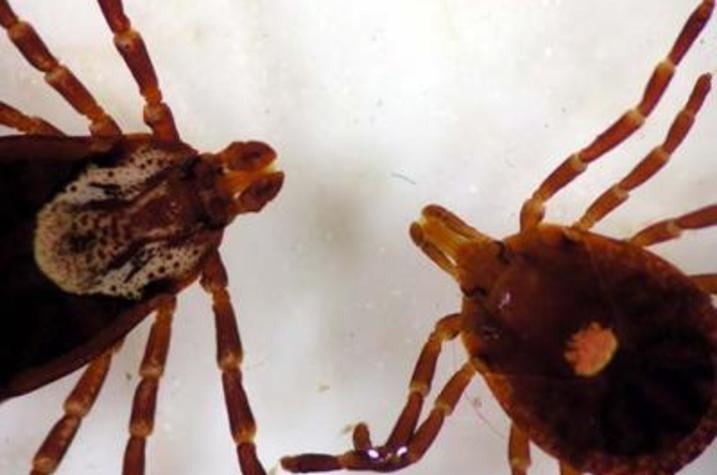UK Entomologist Offers Tips on Ticks

LEXINGTON, Ky., (April 20, 2017) — A mild winter can have its downside. One is that more ticks probably survived than normal. The result is more hungry ticks out earlier than usual, according to Lee Townsend, extension entomologist in the University of Kentucky College of Agriculture, Food and Environment.
Typically, warm weather brings ticks out of hiding to find the blood meal they need to continue their life cycle. In the past two weeks, Townsend has received calls about ticks on both people and pets.
The two most common ticks found in the state are lone star tick and the American dog tick. The adult female lone star tick has a white spot on its back. The male is entirely reddish-brown. American dog ticks are reddish-brown with mottled white markings on their backs.
“Most tick bites are itchy nuisances that last for seven to 10 days,” Townsend said.
However, a small percentage of lone star ticks may be carrying erlichiosis, a bacterial disease. According to data from the Centers for Disease Control and Prevention (CDC), 10 to 50 cases may be diagnosed in Kentucky each year. In addition, saliva injected as this tick feeds may cause some people to develop a “red meat allergy,” a condition diagnosed more often as awareness of it increases.
The bite of the American dog tick is usually less irritating than one from a lone star tick, but this species is a potential carrier of Rocky Mountain spotted fever. CDC information indicates an occurrence of one to six cases each year based on Kentucky’s population and diagnostic history.
Prevention is the key to reducing exposure to ticks. There are several effective precautions to take. Wear a repellent. One repellent containing permethrin can be put on clothing and is particularly effective. Avoid walking through uncut fields or brush and areas with tall vegetation where ticks are most likely to occur. Wear light-colored clothing so ticks are easy to spot. Check pets when they come in from outdoors.
“In tick-prone areas, check yourself, children and other family members for ticks every two to three hours, and when returning home from hikes and other outdoor activities,” Townsend said. “Common places to find ticks are behind ears, hair, neck, legs and around the waist.”
Individuals who find a tick on their body, should remove it by using fine-tipped tweezers, getting as close to the skin as possible to make sure the entire tick is removed. Once it’s removed, individuals should wash the bite area and their hands and apply an antiseptic to the bite site.




